3 ways to organize heating in a bathhouse: how to choose the most optimal one?
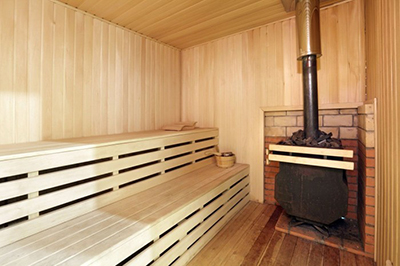
When planning the construction or reconstruction of a steam room, you need to approach the organization of heating with extreme care.
If in the warm season a stove in the steam room will be enough to maintain a comfortable temperature, then in the fall and winter you will have to heat not only the steam room, but also other rooms - anteroom, shower, locker room etc.
This is done in different ways, and each has its advantages and disadvantages.
Options for autonomous heating in a bathhouse
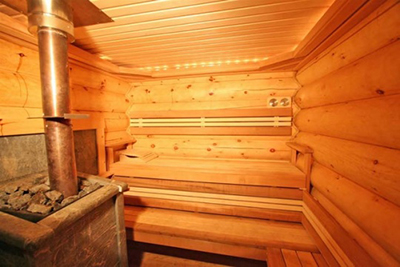
A bathhouse located away from the house is usually equipped with autonomous system heating. This is justified for two reasons:
- independent heating can be provided (the house is usually cooler);
- When transporting the coolant from the house, no heat is lost.
Autonomous heating can be implemented in different ways.
Stove
Traditionally, baths were heated with a stove. The bath stove performed two main functions:
- heated the air in the steam room or sauna to the maximum temperature;
- ensured that comfortable temperatures were maintained in other rooms - anteroom, shower, rest room, etc.
Today, such heating is also used to solve this problem. The choice of the type of stove depends on the characteristics of the room:
- It is enough to heat a small bathhouse compact metal stove-heater.
- If it is necessary to ensure a comfortable temperature in a separate bathhouse with a large area, then either a large metal stove is installed, or a brick stove is laid.
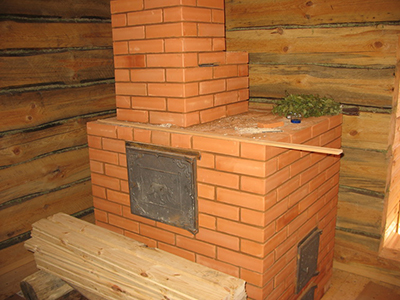
Advantages of stove heating:
- the possibility of using inexpensive fuel;
- even heat;
- maintaining the temperature at the desired level (a brick oven heats up slowly, but does not cool down for a long time).
Cons:
- large equipment sizes (especially near a brick oven);
- slow warm-up;
- large heat losses (the efficiency of the furnace is several times lower than that of the boiler).
Important! In addition, fuel needs to be periodically added to the firebox, and it is almost impossible to automate this process. impossible.
Water
There is practically no alternative to a stove or a heater for the steam room itself. But in other rooms, you can install traditional water heating radiators. In this case, heating will be provided by circulation of the coolant through the pipes.
Boilers are used to heat the coolant to the required temperature. The following devices are used in baths:
- Gas – the most efficient and economical, but at the same time quite expensive. In addition, the installation of a gas boiler requires the approval of a number of documents in the gas industry.
- Electrical – the most convenient to operate, as they can operate in automatic mode. The main disadvantage is low efficiency: due to high power, such a boiler consumes a lot of electricity, which is not cheap.
- Solid fuel – work on wood, coal, pallets, etc. Using solid fuel allows you to save money, but you will have to spend time loading fuel into the boiler firebox.
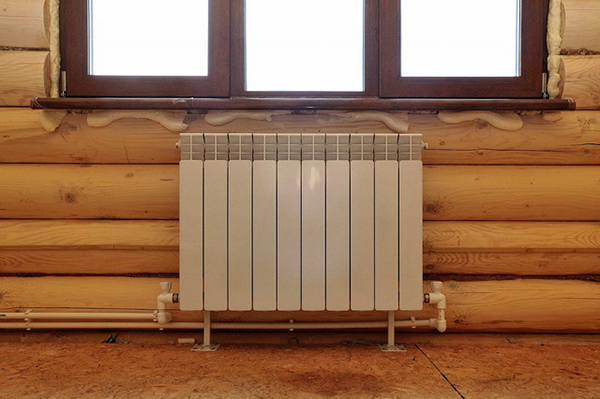
Photo 1. A regular water heating radiator helps to heat the air in the entire room.
When fuel (any) is burned, heat is released, which heats the coolant in the boiler. Hot water circulates through pipes and gives off heat to the air in the rooms through radiators and convectors.
The advantage of this scheme is its versatility: there is no need to use specialized equipment. And it will be easier to maintain the temperature throughout the building.
Cons:
- it is necessary to lay pipes and install radiators/convectors;
- it is still desirable to have a heater for the steam room (wood or electric).
Infrared
Another option is - infrared heating. For this, either panel heaters or special films are used.
Such heating devices operate according to a specific scheme:
- When power is applied, the panel or film begins to generate radiation. in the infrared range.
- Infrared rays hit surfaces and objects, located in the premises and transfer their heat to them.
- Thus, we do not heat the air as such, and everything that is in the bathhouse - the floor, walls and furniture.
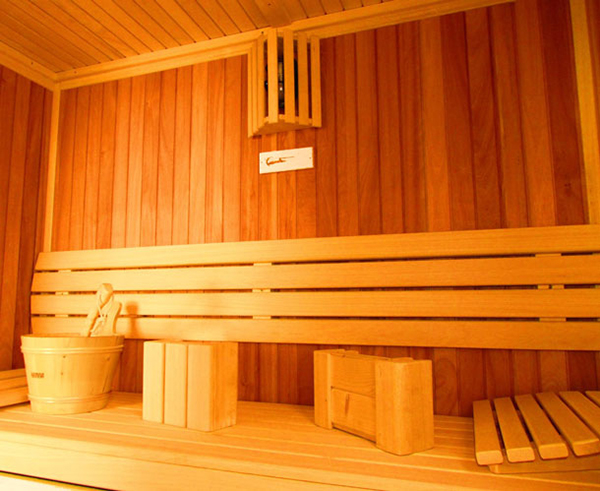
Photo 2. The wall-mounted infrared heater heats the floor, walls and everything in the room.
There are several options for infrared heating devices:
- installation of panel heaters – ceiling or wall;
- installation of film heated floors;
- installation of heating film under wall and ceiling cladding.
Advantages of IR heating:
- comfort in the heater's operating area;
- possibility of temperature zoning;
- no effect on air composition (such heaters do not burn oxygen and reduce humidity only slightly).
Attention! The disadvantages include: the high cost of the heating equipment itself and labor-intensive installation of film heaters. And such devices will take a long time to heat a large room (especially with poor thermal insulation).
How to connect heating to a bathhouse from a residential building?
If the sauna is located close to the house and you plan to use it regularly, then it makes sense to combine these building heating systems:
- We dig a trench between the buildings (it is desirable that its depth exceeds the depth of soil freezing).
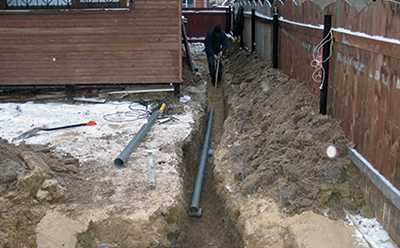
- We lay a pipeline in a trench, through which the coolant will circulate.
- We carefully insulate the pipeline to minimize heat loss.
- We bring the pipeline into the steam room through a hole in the foundation or base and connect to the heating system.
Advice! To optimize energy costs, it is worth equipping the radiators in the sauna thermostatic valves. Then throughout the entire time we will maintain a minimum positive temperature (for example, +4...+5°С), and if necessary, we will quickly warm up the building by turning on the stove in the steam room and setting the desired value on the thermostats.
Useful video
The video shows how heating is supplied to a bathhouse using a steel radiator and heated floors.
Recommendations for choosing heating for a bathhouse
If you use the sauna regularly (at least once a week), then the best option is her connection to the heating system of a residential building. If the project is implemented correctly, it will be possible to ensure a comfortable temperature and reduce heat energy losses to a minimum.

If the steam room is used occasionally, then it is not worth heating it constantly. Autonomous heating will do here.
Most often it is implemented either on the basis of a bath stove or on the basis of a heating boiler - solid fuel, gas or electric.
Popularity is also growing infrared heaters. They are quite economical and efficient, so their installation allows you to reduce the costs of heating the dressing room, rest room and other rooms.







Comments
I installed infrared heaters from the company "General" in my bathhouse. And I can already talk about the pros and cons of such a heating system. The positive point is that the bathhouse warms up very quickly with such heaters, three times faster than if I were to heat the stove. I installed two at chest level and two at foot level, everything warms up perfectly, no complaints.
The only downside I can note is that you have to go online when guests come. Some people worry about whether such heaters are good for your health. I will say right away that there are indeed certain contraindications, but for a narrow circle of people with various problems. But this should be taken into account when choosing an infrared heater.